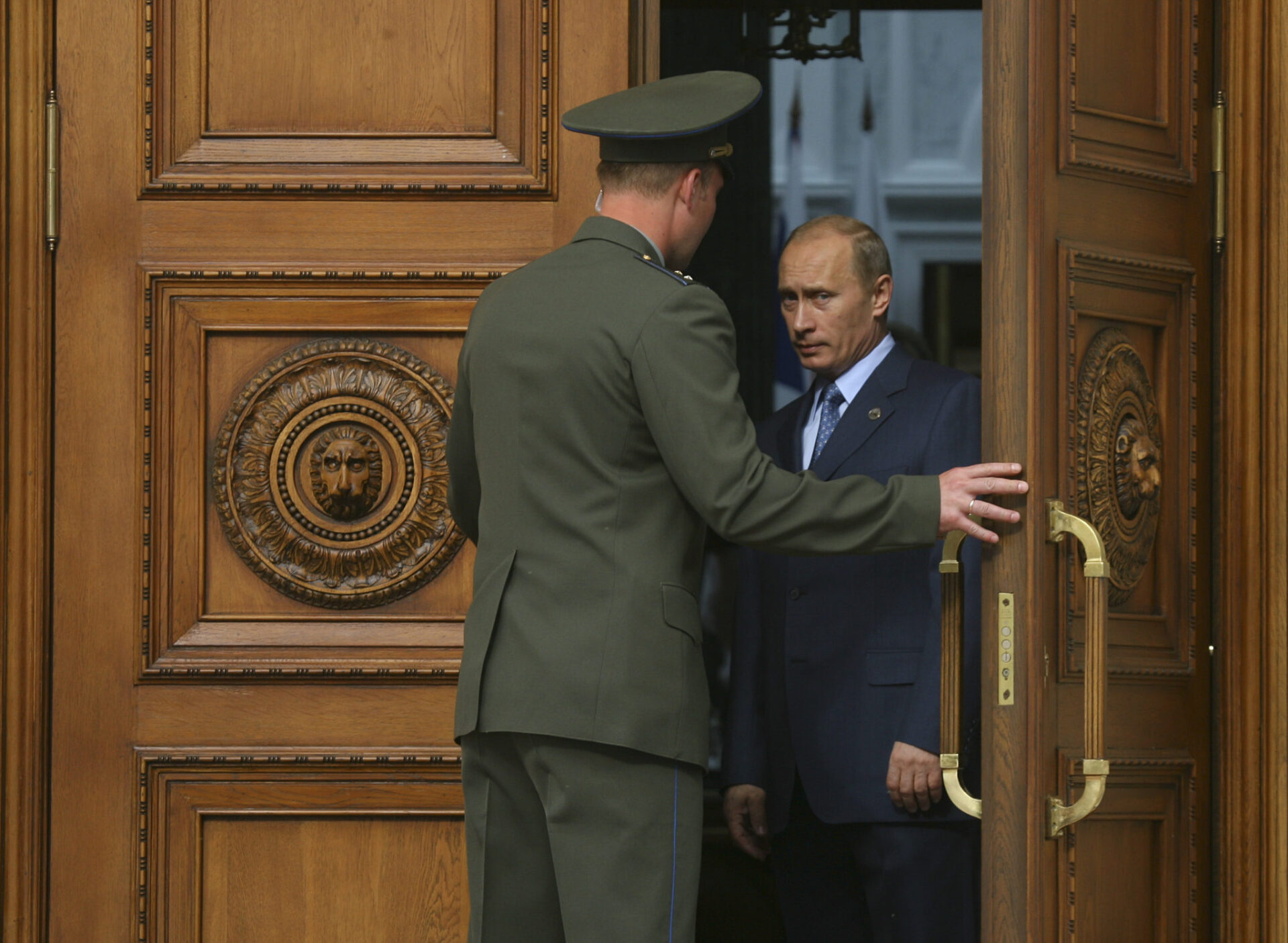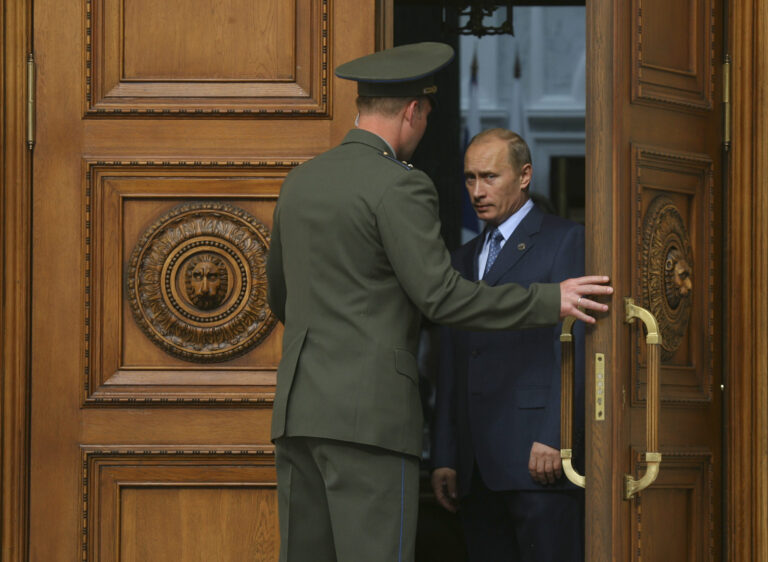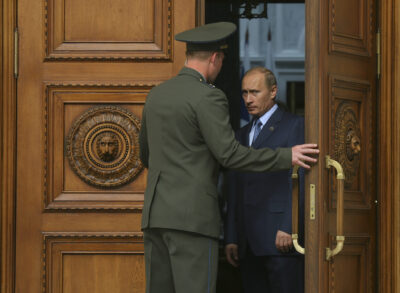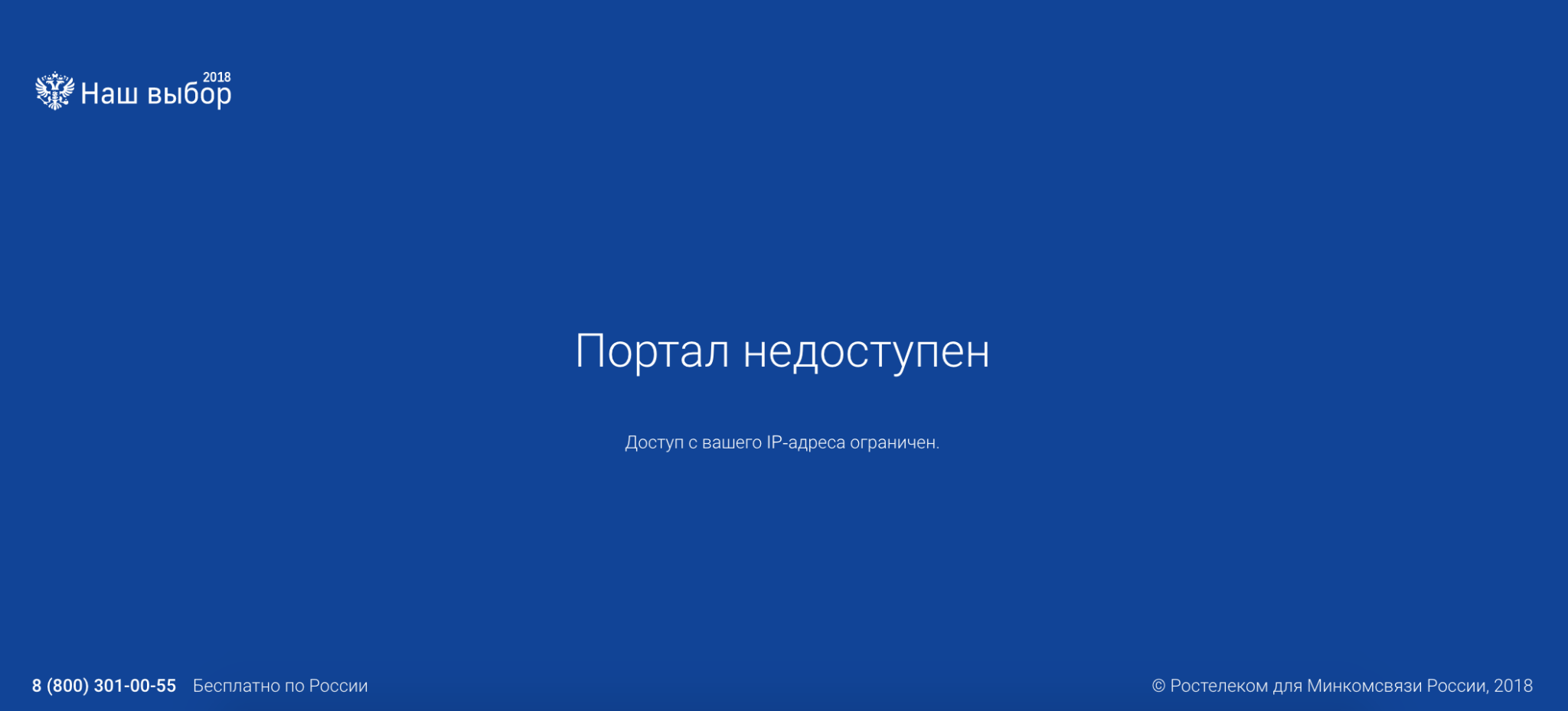It was at the end of the day that we realized: they were cheating us. Suddenly it became clear that in Putin’s Russia, there’s no need to falsify votes in the elections. They know better tricks.
Adding fake votes to the ballot boxes is so old-fashioned. Russia has a new method of influencing the election results on a massive scale: falsifying protocols of the electoral commissions. Thanks to such methods Vladimir Putin could have received a few million more votes than the actual number of those cast by the Russians— an investigation by a group of Poles reveals. Thanks to cameras installed in the polling stations by the Russian authorities, they had a chance to observe the elections.
“Make elections fair and genuine”
To be in Russia during the Russian presidential elections is a dream of anyone who is interested in that country: Vladimir Putin is a powerful politician who controls the administration, the parliament and the judiciary system there. But the road to see the Russian elections is a bumpy one – to observe them, one can apply to an independent mission by the OSCE Office for Democratic Institutions and Human Rights – ODIHR (in Poland, the observers are selected by the Ministry of Foreign Affairs). However, ODIHR can select only a very limited number of participants. As far as I have learnt, this year there were over 100 candidates – mainly experienced international electoral observers, applying for 21 posts.
Organizations close to the Kremlin know about the placement limits for reputable and independent election monitoring missions. And so they try to use it their way – they invited some Poles, who were not chosen by OSCE/ODIHR for a missions, to come to Russia and observe the elections with them. The usual letter sent to a foreign candidate was full of compliments (”I am writing to you because I witnessed your high level of professionalism, impartiality commitment to the values of fundamental freedoms, equality, and political pluralism”) and it included an offer to spend almost eight days in Russia – for free.
In such e-mails to the possible candidates, pro-Putin organizations tried to persuade that OSCE/ODIHR’s decision not to send observers to Crimea was wrong („In fact, it means that the universal principle of the “peoples’ free expression of the will through genuine elections” does not apply to almost two-million population of Crimea. In other words, the destiny of the Crimean population is not of any importance for the very individuals who continuously and tirelessly talk about the “universality of the democratic values”), therefore “it is our duty to provide invigorating support to the voters in Crimea to make the elections fair and genuine”.
Accepting such an invitation has only one effect: the presence of observers from abroad would be used by the Russian propaganda to legitimize the occupation of Crimea by the Russians. Those who would agree to it, would play the role of fake-observers.
Online, instead of an on-site mission
So, what can you do if you cannot go to Russia without going against your conscience? You can switch your camera on. That’s what I decided to do.
In order to prove the citizens that the elections are fair, in 2012 the Russian authorities put web cameras in the polling stations. The webcams show the whole process of voting and the counting of votes. Strong proof of legacy and transparency in Russia.
The appearance of the cameras did not convince average Russians about the integrity of the elections, but allowed some observers to prove that during the recent elections, there were irregularities and electoral falsifications taking place in the polling stations, including stuffing the ballot boxes (submitting more than one vote in a ballot in which only one vote is permitted) or carousel voting (transporting voters to different polling stations so that they can cast their vote to their candidate multiple times).
My idea of establishing an e-observation mission, appealed to a group of experienced observers from Poland, who didn’t make it to go to Russia. One of the very first who joined the team was the Political Accountability Foundation, including Karol Bijoś, who had participated in a number of the OSCE/ODIHR missions. A Polish website, dedicated to East European affairs — Eastbook.eu — with the help of Maciej Zaniewicz, supported us with its newsroom as a space for the observations.
Several dozen people from all over Poland decided to join the project – from Zakopane, Gdynia, Wrocław, Poznań, Kraków and Warsaw. Students and university graduates, journalists and experienced election observers, including former Polish diplomats. 25 people in total.
We had a team, space and the will to observe, but we still had to solve one remaining technical problem: how to fool the Russian security measures, which blocked us from entering nashvybor2018.ru (“nash vybor” in Russian – our choice) portal, on which one could watch the elections in more than 40,000 election commissions? For that we needed the Russian IP — which we had not. After consultations, we provided the observers with access via Virtual Private Network (VPN). The Russian security measures turned out not that difficult to pass.
Another challenge: which commissions should we observe? Thanks to the experts connected to the Russian Movement for the Defense of Voters Rights „Golos”, we knew that not in every region of the country the elections would be rigged. We decided to check whether – as the authorities had promised – the number of the falsifications would decrease, so we had to select those regions where more irregularities than in other regions had happened in previous years.
Who to watch, how to count?
There are relatively many regions in Russia with election irregularities. That includes almost the entire North Caucasus, some of the national republics (Tatarstan, Bashkortostan and Mordovia) and such Russian oblasts as: Kemerovo, Tyumen, Saratov, and Penza. We decided to choose three of them:
– the Kabardino-Balkar Republic in the northern Caucasus region – where official turnout and official support for the candidates backed by the administration usually exceeds 80% – a result rarely seen in other regions of Russia,
– Tatarstan Republic – where during the last elections in 2016, in almost 1,700 electoral commissions – out of 3,000, the turnout exceeded 95% – a result similar to those during the Soviet Union time,
– and the Penza oblast – where in a large number of electoral commissions the turnout exceeded 80% in 2016.
March 17th, 2018
A DAY BEFORE THE ELECTION
For the first time as an e-monitoring mission we meet on Saturday, a day before the elections in Russia. It is a day spent on training for the newcomers, provided by those who already served in real foreign election observation missions. What are the most common irregularities? How can we recognize “stuffing” the ballot boxes, carousel voting and counterfeiting the votes counting – however, only via webcams? What methodology should we adopt to examine the turnout in the selected commissions? And last but not least, the most difficult part of the training – we also need to test the installed software that would provide access to the Russian website via VPN and enable video recording of the footage from the webcams, in order to document the irregularities and electoral fraud.
The decision on which electoral commissions we would choose to observe, has to be left for the last moment – for the simple reason that until the election day, Russia made the list of electoral commissions – in which voting could be observed via webcams, confidential. Fortunately, Russia has 11 time zones so we can take that decision on Polish Saturday evening – when Russians begin to cast their votes in the Russian Far East, and go to bed in Western Russia. The regions we choose for monitoring, are just +2 hours compared to Warsaw, Berlin or Paris (the election in Russia was still during standard time with 2 hours difference; currently, that is during the daylight saving time, the difference is only +1 hour – VSquare).
March 18th, 2018
ELECTION DAY
8 A.M. (Moscow Time)
We start our mission to observe voting in 11 electoral commissions when only the commissions open. It’s boring. No signs that any forgery is taking place. Ballot boxes seem to be properly sealed. In most electoral commissions there are queues already at 8:00 a.m. Moscow Time (MSK), as many residents of Kabardino-Balkaria, Tatarstan and Penza region want to vote as early as possible.
Our program for counting votes starts to work. We observe how the numbers slowly change: 5… 20… 50… 100 voters. It takes two hours in most of the commissions before the turnout reaches 10%.
At this point, we ask the observers to change in front of computers – their eyes and backs need to rest for the next two hours.
10 A.M. (Moscow Time)
At 10:00 a.m. young people start coming to the polling places. Many of them take selfies with the ballot papers. In Tatarstan, those who would publish such selfies on Instagram, were promised to take part in a lottery for iPhone X.
Older voters also have something to enjoy: at 11:00 a.m. in Kabardino-Balkaria polling stations, youth dancing performances begin. In Russia, elections are a real celebration, not just a citizen’s privilege. You can buy food and beverages in the polling stations, often at prices lower than in stores.
12 P.M. (Moscow Time)
Around 12:00 p.m. the turnout in almost all the polling stations exceeds 20%.
Another change of the observers in Poland. Still nothing is happening. Actually everything looks exactly like during elections in Europe.
2 P.M. (Moscow Time)
After 2 p.m. we get a message from one of the observers: “I see stuffing the ballot-boxes in my commission in Kabardino-Balkaria. Do connect to my camera! The members of the commission are adding votes to the ballot box!!!”.
Bad luck: our program for recording video from the screen fails at this point.
An example of stuffing the ballot boxes in Lyubertsy (Moscow Oblast); March 18th, 2018
Still, we can see and hear things. One of the bored on-spot election observers, sitting in the corner of the commission number 240 in Kabardino-Balkaria, says out loud what the outcome of this year’s election must be: “By law or not by law, they (the Russian authorities – MB) now need to have the highest possible turnout. To be successful – at least 70%.”
We’re listening to what is happening in the commission number 240 and we wonder – when will the turnout reach the 70% expected by the Kremlin? Evening is coming and in commissions that we are observing, the turnout is from 20% to 45%. And the number of voters coming in is getting smaller and smaller.
4 P.M. (Moscow Time)
At 4:00 p.m., another change of Polish observers. Nothing is happening in the commissions. Voters almost stopped coming, instead of 60-120 voters per hour, as at the beginning of the day, now there are only 15-30 of them.
By the end of the voting day at 8 p.m., the turnout in Kabardino-Balkaria exceeds only 30%, in the Penza region – 45%, and in Tatarstan – 55%.
THE MIRACLES TIME
At the end of the day everything seems to indicate that the election will prove to be one of the most honest in Russia’s history. We did not observe any carousel voting in the commissions, only small-scale „stuffing” of the ballot boxes in one of the commissions, and historically low turnout. Counting the votes should be quick, since so few people voted.
Meanwhile, regional election commissions report on turnout in individual commissions. Among them – in the ones we observed. Information on turnout data from 10:00 a.m., 12:00 p.m., 3 p.m, and 6 p.m. MSK appears.
And then the miracles begin!
In the election commission number 857 in the Penza oblast, official turnout at 6 p.m. MSK was 80%. We observed only 47%.
An equally strange situation in the commissions number 2029 and 1792 in Tatarstan. Instead of the turnout we observed, which was 52-54%, the official numbers were 80 and 82%! This is almost 30% higher than we counted.
Meanwhile, the other two commission in Tatarstan and three in Penza oblast, the turnout was exactly the same as that observed by us.
How about turnout in Kabardino-Balkaria? In all the commissions we observed (numbers: 91, 110 and 240) the official turnout was far from the one we estimated. Due to our calculations, it ranged from 21% to 34%, while the official numbers reached from 76% to 86%. That’s 3-4 times more! And we’ve counted almost every single voter!
The election is over. In the commissions that we observed, officially 13,235 people cast their votes (plus around 1,000 people who voted outside the polling places). Meanwhile 25 Polish observers, working for 12 hours, counted 8,765 voters only. Where did 4,470 additional votes come from? How did they reach the ballot boxes? And did they reach them at all?
Short summary of the Polish e-monitoring mission
THE RESULTS TIME
What did our Polish e-mission show? That the election results in most of the commissions that we observed (and which had been randomly selected), were rigged.
In some of them, instead of the 30% turnout that we recorded, the official numbers were almost three times higher. In just 6 electoral commissions, where official and our turnout data differed, four and a half thousand votes were added to the official results. It means an average of nearly 740 votes for each of the polling stations. That’s more than the average number of votes we recorded in all of the 11 polling stations observed.
The technology of falsifying the elections was simple, neither carousel voting nor stuffing the ballot boxes needed to be involved. One did not also need to „steal” votes cast for the opposition candidates, while counting votes. The electoral commissions, instead of counting the votes received and putting the numbers into the protocols, simply falsified them.
Conclusions? In practice, in Russia, people still come to the election commissions, although clearly less eagerly than the Kremlin’s propaganda says. Voters receive ballot papers and fill them in – however, in many commissions no one really counts the votes. What counts, however, is the order that comes from the top – the turnout is to reach 89%, and support for Putin is to exceed 90%. And so indeed it does.
According to a Russian physicist and election analyst Sergei Shpikin, out of the 56 million votes cast for Vladimir Putin during this year’s elections, over 10 million may have been falsified. Of this number, about 1 million of votes came from the regions which we observed. Precisely: 650,000 votes were to be falsified in Tatarstan, over 350,000 votes in Kabardino-Balkaria, and over 150,000 – in Penza region.
The remaining 9 million votes came out of nowhere in the Caucasian republics of Chechnya, Karachay-Cherkessia, Dagestan, as well asin the republics of Bashkortostan, Kalmykia, Mordovia, and Tuva, and in the oblasts of Kemerovo, Saratov, Tyumen, Tambov, as well as in Krasnodar Krai.
*) Mateusz Bajek is a graduate of international relations and East Slavic Studies at the University of Warsaw. He also studied at the State University of St. Petersburg. Since 2012 he has participated in numerous election observation missions in Central and Eastern Europe (including OSCE/ODIHR and the European Platform of Democratic Elections – EPDE) – in Russia, Georgia, Belarus, Ukraine, etc.
Polish analyst specializing in Eastern Europe. Employed in Esperis Consulting and Political Accountability Foundation. Since 2017 working with Fundacja Reporterów (Reporters Foundation) as an expert.







